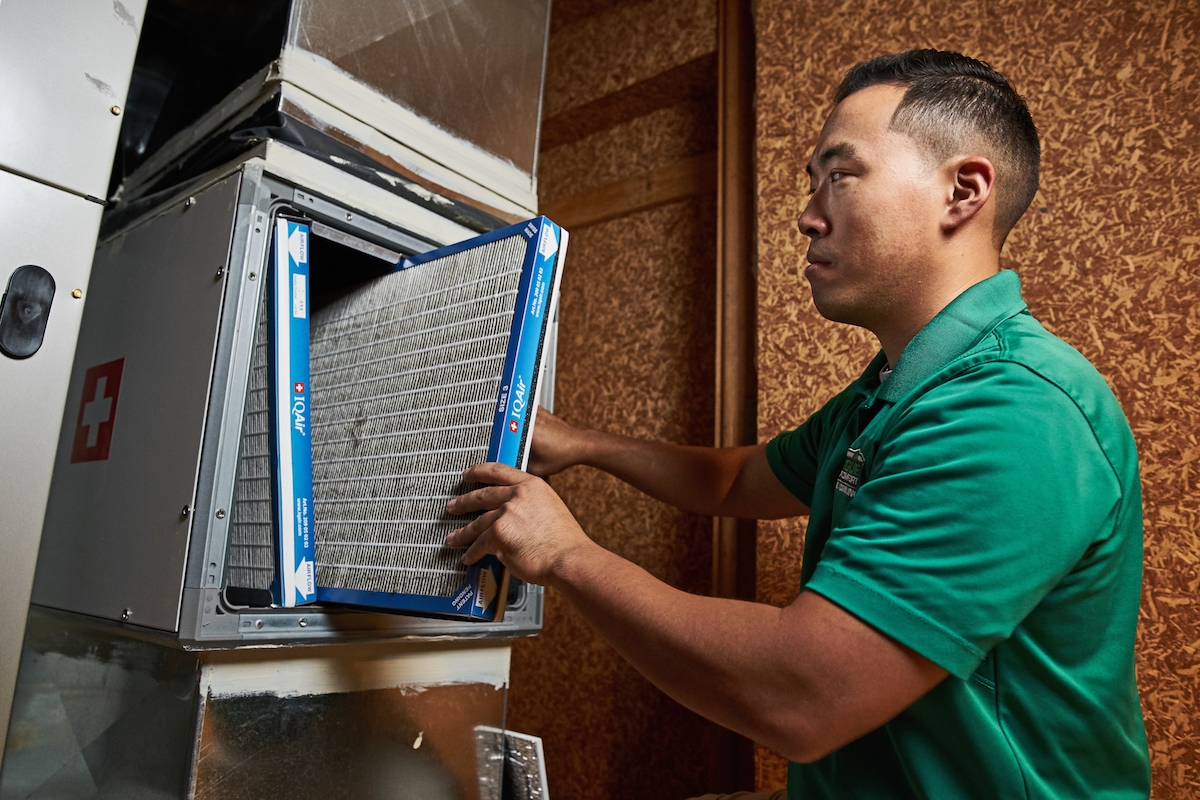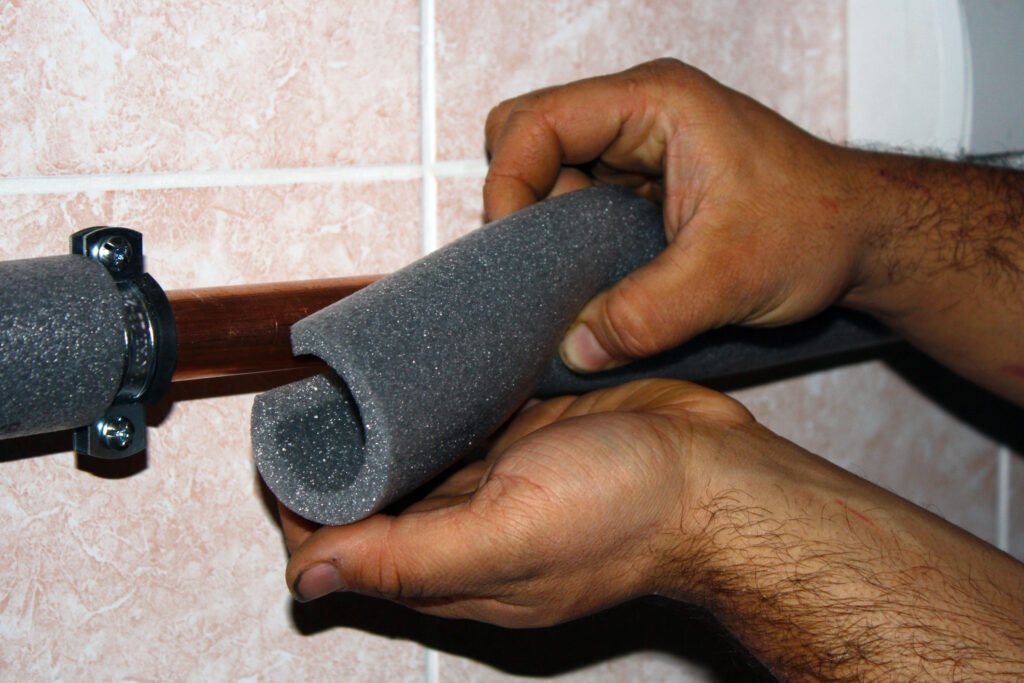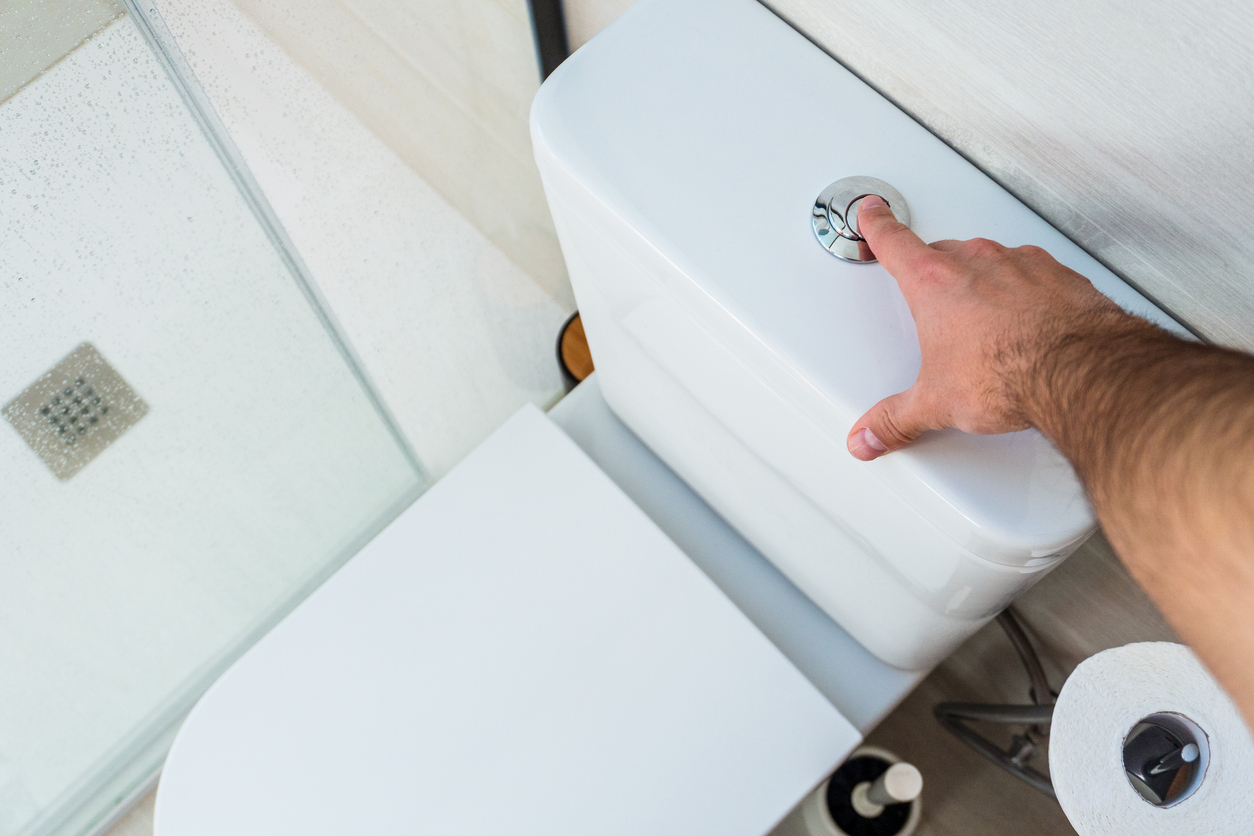
In this post, we’ll go over the steps you can take to maintain your HVAC, as well as the steps that professionals should handle.
Imagine this: it’s July, it’s hot, it’s humid, and you’re afraid to leave the house in case you melt into the sidewalk. The only relief you and your family have is sitting directly in front of the AC. Even the dog is in on it.
All of a sudden, the air cooling the sweat on your temple turns lukewarm, or stops, or the airflow drops in half. You call up your local HVAC company and ask them to take a look. They tell you it’s the busiest weekend of the year and their phones are ringing off the hook — the earliest they can get to you is 4 days out. How do you feel, in this imaginary nightmare scenario?
This nightmare can be avoided by doing fall HVAC preventative maintenance and spring HVAC preventative maintenance. Your HVAC system needs regular attention and care so it doesn’t let you down right when you need it most.
There are other benefits of doing seasonal maintenance: it’ll make your system much more efficient, reducing energy costs up to 40% depending on the system. You’ll need fewer repairs over the lifetime of your system, and the system itself will last much longer if it’s regularly maintained.
Last but not least, it’s much safer — a properly maintained HVAC system means there’s less dust getting dispersed throughout your house and your lungs, less chance of catastrophic issues like sparking a fire or burst pipes when on vacation in the winter, and it’ll protect you against carbon monoxide poisoning if something malfunctions.
In this post, we’ll go over the steps you can take to maintain your HVAC, as well as the steps that professionals should handle.
HVAC Maintenance You Can Do Yourself
The first and most important step is always going to be cutting the power to the unit, both for your personal safety and to make sure you don’t destroy it.
Change the filter every 1-3 months
This is for your health — so you’re not breathing in dust — and to maintain the efficiency of the system. If you’re in a dusty area, have pets who shed, or if it’s running constantly, you’ll want to change it more often, closer to once a month.
Trim foliage at least 18” away
If there are any trees, bushes, or anything else within a foot and a half of the unit, cut it back and clear it out. This will prevent more debris from getting into the unit, and will ensure that air can be pulled into the system properly.
Clear debris from the outdoor unit
Unscrew the top of the unit and clean out leaves and any other debris from the inside.
Hose down the outdoor unit
While the top is unscrewed, pop a hose in there and clean it from the inside out (so the water is escaping through the fins to your yard. A clean unit ensures that clean air can pass through the fins and into your home.
Make sure unit is leveled
An off-kilter unit can cause efficiency problems. If it’s not level, stick a scrap piece of wood underneath until it’s nice and flat. If it’s a heat pump, it doesn’t have to be level — it should be slightly sloped, away from the foundation of your house.
Adjust the fins carefully with a fin comb
This will ensure steady airflow through the coils to keep your system healthy and reduce the chance of overheating.
Make sure supply and return registers in the house are unblocked
If the registers (whether they are blowing air into your house or pulling it into the system) are blocked, it can cause a lot of stress on the system, resulting in a shorter lifetime, increased likelihood of breakdowns, and weaker airflow. Check each register in the house and make sure there’s no furniture or anything else sealing them up.
Do a visual inspection to see if you need to call in a professional
Check for any sign of dirty coils or water leaks. Listen to how the system sounds. Has the sound changed recently? These are all signs that you should get a professional out to get your system back into tip-top shape.
Maintenance that Professionals Should Handle
Calibrate the thermostat
They’ll check your thermostat to make sure it’s displaying the correct temperature, which will increase the efficiency of your system.
Check electrical connections and motors
If needed, they will tighten electrical connections, as well as measure the voltage and current on the motors.
Lubricate moving parts
This will reduce friction in your unit, resulting in lower energy usage.
Inspect condensate drain
The technician will remove sludge or blockages, as well as check that the drain pan isn’t overflowing and causing water damage.
Check system controls
They’ll make sure that your system is starting up, shutting off, and operating properly, saving you a ton on your electricity bills.
Clean and adjust blower
Blower issues can decrease efficiency by 15%, as well as reducing airflow (and comfort!). Your HVAC specialist will make sure it’s clean and functioning at peak performance.
Inspect ductwork
This is to make sure there are no leaks, holes, or weak connections, or dirty ducts, any of which can reduce the velocity of airflow through your house.
Spring Only
Clean evaporator and condenser coils
Both sets of coils need to be cleaned regularly to function properly. When they’re dirty, they could just stop working entirely, as well as decrease the AC capacity, increase energy usage, and put extra wear and tear on the system.
Check refrigerant charge and repair leaks
When refrigerant is low, the AC cannot properly remove heat from the house (yes, air conditioners don’t just add cold air, they remove hot air!).
Fall Only
Check fuel line connections
This is crucial to make sure your system isn’t a fire hazard or leaking dangerous fumes in your house.
Inspect gas pressure, burner combustion, and heat exchanger
If not functioning properly, it can result in improper burner operation, which is very unsafe and inefficient.
Learn more about fall HVAC maintenance.
Conclusion
Do you need to schedule your seasonal HVAC maintenance? Or did you wait too long, and now need an emergency air conditioning repair? Either way, we’ve got you covered! Contact us today to schedule an appointment!
Prevent HVAC Emergencies
Don’t get caught off-guard, schedule preventative maintenance today! Click below to get started.



